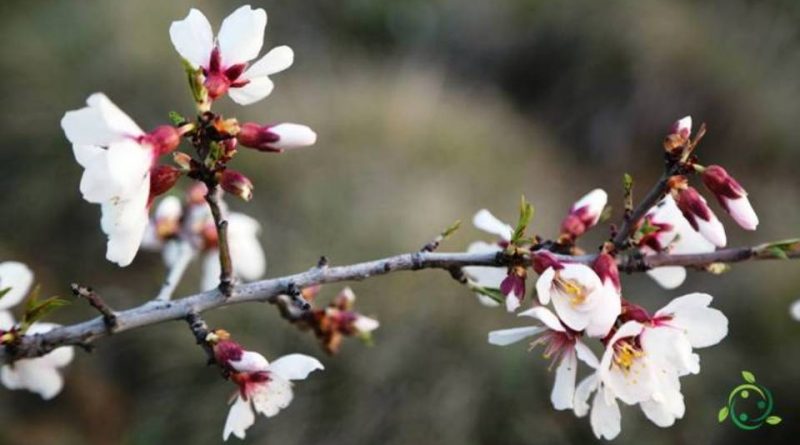When pruning the almond tree
When pruning the almond tree
The mandorlo (Prunus dulcis (Mill.) D.A.Webb, 1967) is a tree of the Rosaceae family.
It is a historical plant that is bred for the production of almonds according to different forms of farming.
Generally, however, there are three forms that are adopted for its cultivation for production purposes:
– vase form: to obtain this shape it is necessary to start from a sturdy rod, more or less than 50 cm from the ground. The first year I will let the plant grow freely and subsequently, with the arrival of spring, the 4/5 most luxuriant branches are chosen, which stretch outwards and the excessively vigorous branches sprout;
– palmetto shape: in this case a rod is used 80 cm from the ground and the main branches are selected, while the other branches are pruned and thinned. After one year, the vertical branch is also shortened and two other lateral branches are selected, so as to create a second branching level. In this way, the plant has a main stem and four lateral branches, arranged in two rows;
– free growth: in this technique, which is used in old almond groves or for more amateur productions, the plant is grown according to its natural tendency, without however neglecting the maintenance pruning and elimination of the branches too dense inside and dry or damaged branches. In this case the stem must reach 150-200 centimeters in height and 4 or 5 sturdy branches must be kept above the cut to be pruned to 40 centimeters in length. Shoots will form on these branches, which will give the almond its final appearance.
In general, however, the pruning of the almond tree must maintain a balance between vegetation and the production of this important plant.
Period of pruning –
Various factors are involved in the period of pruning of the almond tree, such as above all the latitude and altitude in which it is grown; moreover the periods of intervention are different also because there is a dry (winter) and a green (summer) pruning.
In winter pruning, one must intervene before the vegetative restart, considering that the plant is one of the first to bloom and that in some southern regions it blooms in some cases at the end of December. Depending on the area, however, the almond tree is pruned between mid-January and early March. Furthermore, it must be emphasized that the almond tree does not like large cuts and shows its suffering due to excessive pruning by reacting with a considerable production of rubber, which can then lend itself to subsequent plant diseases.
It is for these reasons that winter pruning must be light, with cuts that on average have to remove from 1/4 to 1/5 of the production structure. Only in the case in which the tree is weak, it can be more incisive, in order to stimulate the emission of new jets.
In the green pruning, which is carried out in summer, between the months of June and July, the aim is to reduce the shade on the fruits and keep the vegetation in balance. Here, too, one must not exceed in order not to expose the plant to excessive insolation and loss of the photosynthesizing surface.
Another intervention of green pruning can be carried out in the period of September. With this intervention we operate on the oldest branches that have produced, removing them by ¼; this induces the plant to produce new vegetation in the following year.
It is emphasized that, to avoid gummy after pruning, on larger cuts it is always good to apply a pruning mastic that protects from infections and helps dry wounds.
Varieties of Almond –
The varieties of almond trees are innumerable, many of which are limited to small areas and ancient traditions. In general, however, depending on the characteristics of the almond, the following varieties are distinguished:
– bitter, the seeds of which contain hydrogen cyanide;
– dulcis, whose seeds are used in food, in the confectionery industry and for the extraction of officinal almond oil;
– fragilis (or sticciamani), with sweet seed, but non-woody endocarp.
The most common cultivars include:
– Late flowering self-fertile: Filippo Ceo, Genco, Tuono, Supernova;
– self-sterile with late flowering: Ferragnes, Fra Giulio, Falsa Barese;
– others: Fascionello, Ferraduel, Jordhanol, Pizzuta d’Avola.
It is emphasized, as mentioned before, that the almond blossoms from the end of December, in the early, to March, in the late ones.

